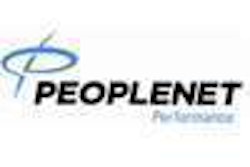Vigillo — provider of a Web-based risk management platform for the delivery of policies, forms, training, assessments and management reports to the trucking industry — announced that Nalco Co. has adopted its Software-as-a-Service (SaaS) platform. Using the Vigillo system to consolidate and automate its fleet risk management process, Nalco says it immediately is realizing measurable administrative cost savings and is making more effective risk-avoidance decisions faster and more effectively.
“By using the Vigillo platform, we will save approximately 1,100 man-hours per year, valued at almost $38,000,” says Peter J. Ramsay, logistics safety supervisor at Nalco. “That puts the return on our investment in the system at 4.3 months based on just the risk management portion. The system also gives us data to make better decisions faster than before about where we need to deploy our resources. We really can’t put a value on that, but we do believe the ROI will increase as we employ other functions of the system. We have really only scratched the surface with regards to what Vigillo can do for us.”
Headquartered in Naperville, Ill., Nalco is an environmental solutions company providing water treatment and process chemical programs to a broad range of industries in 130 countries, saving water and energy. In the United States, Canada and Puerto Rico, the Nalco fleet delivers products using 285 tractors based in 53 locations.
Prior to implementing the Vigillo risk management system, Nalco says it manually gathered information on accidents, incidents and deliveries in a Lotus notes database; the storage process made data analysis time-consuming and costly. Additionally, in the last three years the Nalco fleet has grown in size by 35 percent.
“Our fleet continued to grow, and we didn’t have the information we needed to know where to put our resources,” Ramsay says. “We knew that we were having issues at some locations, but we couldn’t be very specific. We needed to be predictive, a way to make better decisions about to how to most effectively use our safety and training resources.”
With the Vigillo platform, Nalco says it now has immediate access to information from as many as 16 different sources; in particular, data from its Delivery System Incident Reports (DSIR) and onboard systems is entered into the system and consolidated into five main types of input. Included are Injuries, Vehicle Accidents, Zero Defect Delivery, Rules Violations and Miscellaneous categories.
Vigillo says the system then produces its Scorecard Suite of reports for individual drivers, supervisors and locations, and for the fleet as whole, and that the data — which is especially valuable in analyzing risk in driving behaviors — now is being used to analyze U.S. Department of Transportation inspections on a city, state and regional level so that the fleet can allocate resources to address potential problems.
Nalco says it also is incorporating SafeStat (Safety Status Measurement System) performance data from the Federal Motor Carrier Safety Administration on its Vigillo Scorecard Suite of reports to further lower risk in its organization, and more simply and accurately present safety data to its customers. SafeStat is an automated analysis system that uses indicators in four analytic Safety Evaluation Areas (SEAs) — Accident, Driver, Vehicle and Safety Management — and combines them into an overall safety status assessment known as a SafeStat score.
In the future, Nalco says it plans to use Vigillo’s alliance with Instructional Technologies Inc. (ITI) to employ ITI’s computer-based in-cab truck driver training programs. ITI Pro-Tread and Pro-Tread In-Cab truck driver training programs include a growing number of 54 interactive self-paced lessons.
Vigillo says its Scorecard Suite of reports includes a risk score based on factors such as accidents, customer service, rules violations, training and incidents for individual drivers, groups of drivers, managers and locations; an integral part of the Vigillo Web-based SaaS platform, it enables managers to better prepare and respond to the many high-risk situations encountered when operating truck fleets. Potential benefits of adopting the Web-based system include addressing problems before they become emergencies, lowering costs through improved time management and increased employee productivity, reducing turnover and improving insurance risk profiles.












